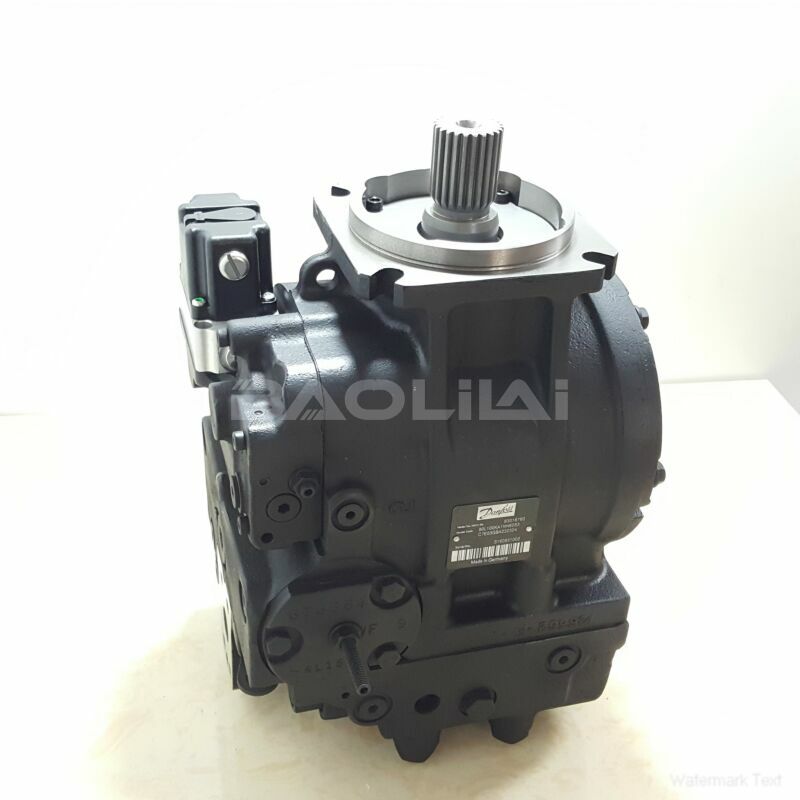Installation and debugging skills of BAOLILAI 9820174 hydraulic pump
Installation and debugging skills of BAOLILAI 9820174 hydraulic pump
In the hydraulic system, the stability of the performance of the hydraulic pump is directly related to the working efficiency and service life of the whole system. As a well-known brand recognized by the industry, BAOLILAI hydraulic pumps are widely used in engineering machinery, industrial equipment, agricultural machinery and other fields with its high efficiency, stability and durability. However, no matter how high-quality the hydraulic pump is, if it is improperly operated during the installation and debugging process, it will also affect the normal performance of its performance. This article will explain the installation and debugging skills of BAOLILAI hydraulic pump 90L180-KP-5-CD-80-T-C-C8-J-05-FAC-42-42-24 in detail to help users put it into use scientifically and standardizedly.

- Preparation before installation Confirm the product model and parameters: Before installation, you must strictly check whether the model, specification, displacement, speed range and interface size of the selected BAOLILAI hydraulic pump are consistent with the equipment design to avoid system hidden dangers caused by improper selection.
Check the status of the hydraulic pump: ensure that the hydraulic pump has no bumps, scratches, or debris during transportation, the bearing rotates flexibly, and the interface threads are intact.
Clean the hydraulic system: Before installation, the system oil tank, oil pipe, joints, filter element, etc. should be thoroughly cleaned to prevent impurities from entering the system, prevent scratches or blockages in the pump, and ensure that the oil cleanliness meets the standards recommended by BAOLILAI. - Correct installation method of the hydraulic pump Correct alignment and fixation: The hydraulic pump and the power source (motor or engine) must be accurately calibrated for axis concentricity to avoid eccentric loading and abnormal wear. The pump body should be reliably fixed on the bracket or frame to ensure that there is no looseness or vibration during operation.
Installation of inlet and outlet pipelines: The oil suction pipe should be as short and thick as possible to reduce oil suction resistance and prevent cavitation. The pressure pipeline should use a hydraulic hose or steel pipe of sufficient strength, and the interface should use a well-sealed O-ring or conical joint to ensure no oil leakage.
Filling recommended hydraulic oil: Select hydraulic oil that meets the requirements according to the technical manual of BAOLILAI hydraulic pump 90L180KP5CD80TCC8J05FAC424224, keep the oil clean, ensure that there is enough oil in the oil tank, and avoid the pump from sucking air during the initial operation. - Hydraulic pump debugging steps and skills Initial no-load operation: Before the first start, the pump shaft should be manually rotated for pre-lubrication. After confirming that there is oil in the pump body, it can be started at low speed and no-load. The initial no-load operation time is generally recommended to be no less than 10 minutes.
Check the system sealing: During the no-load operation, focus on checking whether there is leakage in each joint, flange, and sealing surface. If any problems are found, the machine should be stopped in time for investigation and treatment.
Gradually load and debug: After confirming that the system is well sealed, the load can be gradually increased. Pay attention to whether the system pressure, flow rate, and pump body temperature rise are within the normal range to avoid overpressure, overtemperature, and overflow operation.
Adjust control parameters: If BAOLILAI load-sensitive pump or variable pump is used, the overflow valve, pressure valve, flow control valve and other parameters should be adjusted according to the equipment requirements to ensure that the system supplies oil on demand and is energy-efficient and efficient.
Continuous test run: After completing the parameter debugging, it is recommended to run continuously for at least 2 hours at full load to ensure stable system performance without abnormal noise, vibration or temperature rise. - Common problems and solutions No output or insufficient flow at startup: often caused by insufficient oil suction or blockage of the oil inlet pipeline, check the oil level in the oil tank and the blockage of the filter element.
Abnormal noise in the pump body: There may be air ingress, cavitation or bearing wear, and the sealing of the oil suction pipe and the cleanliness of the oil need to be checked.
Abnormal fluctuation of system pressure: mostly due to unreasonable settings of the overflow valve and pressure control valve or internal contamination, which should be cleaned and readjusted. - Summary BAOLILAI hydraulic pumps have the characteristics of high efficiency, stability and easy maintenance, but reasonable installation and scientific debugging are the key to ensuring its reliable performance. During the installation and commissioning process, users must strictly follow BAOLILAI’s technical requirements, combine their own equipment conditions, and operate scientifically to ensure that the hydraulic system can operate efficiently, safely, and sustainably. If you encounter any problems during installation or use, it is recommended that you consult the BAOLILAI technical service team in a timely manner to obtain professional guidance.
This article is published by the official website of Baolilai Hydraulics, please contact the author and indicate the source for reprinting:https://www.baolilai-pump.com/news/view-3536.html


